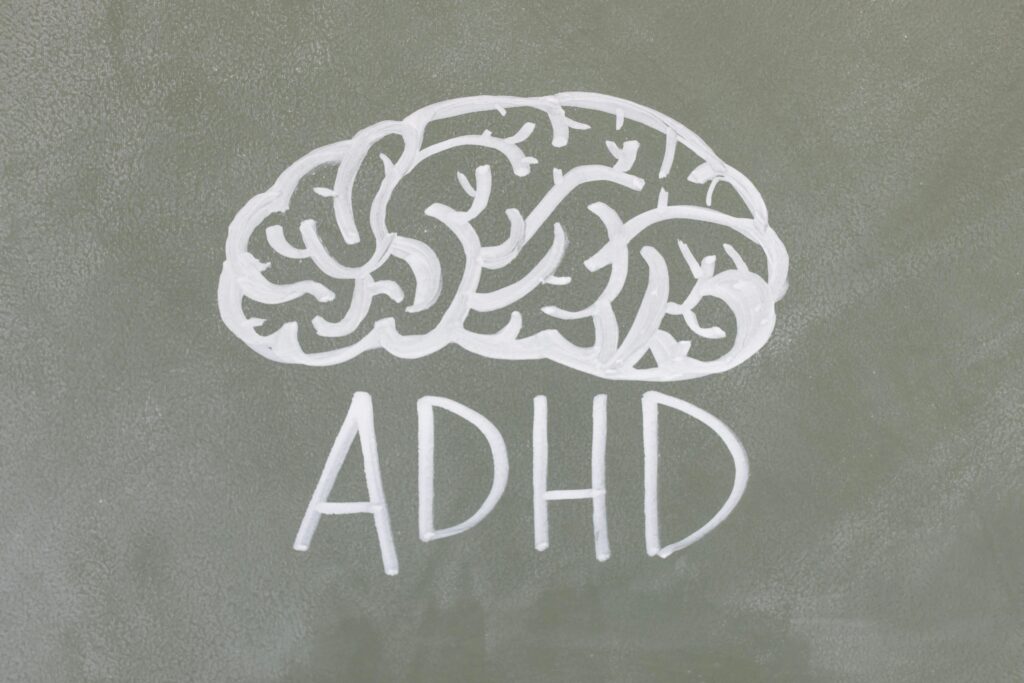Understanding ADHD and Its Impact on Focus
ADHD, or Attention-Deficit/Hyperactivity Disorder, is a neurodevelopmental condition that affects millions of people worldwide. Unlike occasional distractions that everyone experiences, ADHD involves chronic difficulties with attention regulation, impulse control, and task management. The condition is often misunderstood as mere laziness or lack of discipline, but in reality, it stems from differences in brain structure and neurotransmitter activity, particularly involving dopamine and norepinephrine.

How ADHD Affects Concentration
The prefrontal cortex, responsible for executive functions like planning, decision-making, and focus, operates differently in individuals with ADHD. This leads to:
- Difficulty sustaining attention on tasks that aren’t immediately stimulating.
- Easily getting sidetracked by external noises, thoughts, or movements.
- Struggling with task initiation, even for important responsibilities.
- Forgetfulness and disorganization, making it hard to follow through on plans.
Understanding these challenges is the first step toward developing effective coping strategies.
1. Creating a Structured Routine for Better Focus
A well-structured routine is one of the most powerful tools for managing ADHD. Without a clear plan, the ADHD brain tends to drift toward whatever feels most engaging in the moment—often leading to procrastination or unfinished tasks.
Why Routines Work for ADHD
- Reduces decision fatigue by automating daily tasks.
- Provides predictability, which calms an overactive mind.
- Helps transition between tasks without getting stuck.
How to Build an ADHD-Friendly Routine
- Morning Routine
- Start with a consistent wake-up time (even on weekends).
- Incorporate a short mindfulness exercise or stretching to set a focused tone.
- Eat a protein-rich breakfast to stabilize energy levels.
- Work/Study Blocks
- Use time-blocking to assign specific tasks to set periods.
- Example: “9:00–10:30 AM: Deep work on Project X (no distractions).”
- Evening Wind-Down
- Set a digital curfew (no screens 1 hour before bed).
- Prepare for the next day by laying out clothes or making a to-do list.
Tip: Use visual aids like whiteboards or apps (e.g., Trello, Google Calendar) to reinforce the routine.
2. Designing an ADHD-Friendly Workspace
Your environment plays a huge role in how well you can concentrate. Clutter, noise, and even poor lighting can derail focus for someone with ADHD.
Optimal Workspace Adjustments
- Minimize Visual Clutter: A clean desk with only essential items reduces cognitive overload.
- Lighting: Natural light is best; if not possible, use warm, indirect lighting to reduce eye strain.
- Noise Control:
- Use noise-canceling headphones with brown noise (better than white noise for ADHD).
- If silence is unnerving, try low-volume instrumental music.
- Ergonomics: An uncomfortable chair can make fidgeting worse. Consider a wobble stool or standing desk.
Pro Tip: Keep a “distraction notepad” nearby to jot down intrusive thoughts (e.g., “Remember to call Mom”) so they don’t hijack your focus.
3. The Pomodoro Technique: A Game-Changer for ADHD
The Pomodoro Technique is a time-management method that breaks work into intervals (traditionally 25 minutes) followed by short breaks. This system aligns well with ADHD brains, which thrive on urgency and reward.
How to Adapt Pomodoro for ADHD
- Shorter Intervals: If 25 minutes feels too long, start with 15-minute sprints.
- Active Breaks: Use breaks for movement (e.g., jumping jacks, walking) to reset attention.
- Progress Tracking: Mark completed Pomodoros with a tally—visual progress boosts motivation.
Why It Works: The time constraint creates artificial urgency, while breaks prevent burnout.
4. Movement and Fidgeting: Channeling Restless Energy
Contrary to old-school advice to “sit still,” movement can actually enhance focus for ADHDers. Physical activity increases dopamine production, which is often low in ADHD brains.
Effective Movement Strategies
- Walking Meetings: Replace sit-down chats with walking discussions.
- Fidget Tools: Stress balls, desk pedals, or even doodling can help sustain attention.
- Exercise Breaks: A 5-minute burst of exercise (e.g., push-ups, dancing) can reboot focus.
Science Backs This Up: Studies show that moderate exercise improves executive function in people with ADHD.
5. Sleep, Nutrition, and Brain Health
ADHD symptoms worsen with poor sleep or an unbalanced diet. Optimizing these areas can lead to noticeable improvements in focus.
Sleep Tips for ADHD
- Consistent Bedtime: Aim for the same sleep schedule daily.
- Wind-Down Routine: Read a book or listen to an audiobook instead of scrolling.
- Dark, Cool Room: Use blackout curtains and keep the temperature around 65°F (18°C).
ADHD-Friendly Diet
- Protein-Rich Foods: Eggs, nuts, and lean meats stabilize blood sugar.
- Omega-3s: Found in fish, flaxseeds, and walnuts, they support brain function.
- Hydration: Dehydration mimics ADHD symptoms (brain fog, fatigue).
Avoid: Sugar crashes and processed foods, which spike and crash energy levels.
FAQs: Common Questions About ADHD and Focus
Q: Can adults develop ADHD, or is it only a childhood condition?
A: ADHD is lifelong, but symptoms may change with age. Many adults are diagnosed later in life after struggling with focus at work or home.
Q: Is medication necessary for improving ADHD focus?
A: Not always. While stimulants (e.g., Adderall) help many, others manage well with behavioral strategies, therapy, and lifestyle changes.
Q: Why do people with ADHD hyperfocus on some tasks but struggle with others?
A: ADHD isn’t a lack of focus—it’s dysregulated focus. High-interest tasks trigger dopamine, making them easier to concentrate on.
Q: How long does it take to see improvements with these strategies?
A: Small changes can show effects in weeks, but consistency is key. Track progress to identify what works best for you.
Final Thoughts: Building a Sustainable System
Improving focus with ADHD isn’t about willpower—it’s about designing a lifestyle that works with your brain’s wiring. Experiment with these strategies, track what helps, and discard what doesn’t. Over time, you’ll develop a personalized toolkit to enhance concentration and productivity.

